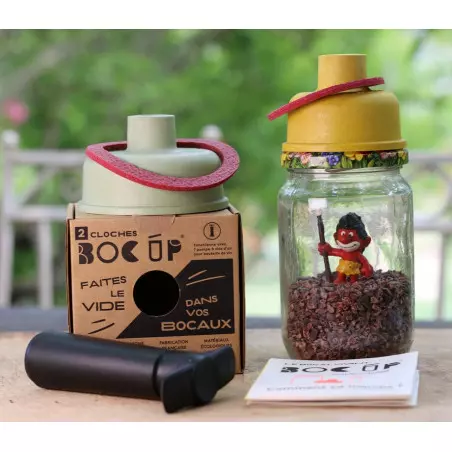The notion of Low-tech (low technology) is not recent. In the 1970s, the world experienced its first energy crises, and people began to talk more and more aboutEcology... It is at that moment in the United States that a school of thought begins to consider a more sustainable mode of consumption. responsible, more respectful of theenvironment. It looks like your text is incomplete. Could you please provide the full text you would like translated from French to English? Low-Tech is born, but struggles to be heard.
It was in 2007 that the one who could also be called " soft technology "resurfaces. As economic and environmental crises multiply, this new way of thinking and consuming seems to be a good" alternative to the world in which we live.
At present, the Low-Tech Lab (a French association created in 2013) lists 854 projects in 87 countries, spread across all continents. These projects cover 12 very different application areas, such as energy, food, waste, water, health, and education.
How to define Low-Tech ?
If we want to define the Low-Tech, one can say that it corresponds to a set of simple, practical, and inexpensive techniques.
She often calls upon forgotten skills. She seeks to develop artisanal methods that can be adapted according to the regions, climates, and resources available on site.
Its main principle is that everyone can live better by consuming less and as locally as possible.
Unlike its big sister, High-tech, it aims to be respectful of the Planet.
That's what makes it so that, even if one is tempted to confuse the Low-Tech With Green Tech, these two concepts are very far apart from each other.
If the first advocates for solutions based on simple techniques, favoring recycled materials, and aims for the long term, the second uses advanced technologies to solve a short-term problem, using non-renewable materials and energies. In summary, it does not have Vert What is the name?
What are the criteria that define Low-Tech ?
For a technology to be qualified as Low-Tech, it must meet 3 criteria:
- To be useful:
It must be able to meet an essential need of the individual or the community (better access to healthcare, to drinking water, etc.). By refocusing on the essentials, by modifying certain actions or consumption habits, it allows for the adoption of a healthier and more virtuous behavior for the environment.
- To be accessible:
It must have an affordable price, and in addition, be simple enough to use so that the greatest number of people can adopt it. It must be able to be manufactured as close to the needs as possible. It allows for better autonomy of the populations.
- To be sustainable
She must be able to last over time, be repairable, and recyclable. It is the opposite of planned obsolescence. It involves the sharing of knowledge.
- To be sustainable
- To be accessible:
In 2022, ongoing work, particularly by ADEME, suggests taking into account additional criteria such as the pursuit of simplicity, the innovative dimension, etc.
What is the philosophy of Low-Tech ?
By prioritizing essential needs, artisanal methods that are simple and accessible, and by making us seek the energy sobriety, It seems like the text you provided is incomplete. Could you please provide the full sentence or context so I can assist you with the translation? Low-Tech invites us to rethink our way of living and consuming.
This philosophy gives pride of place to the " Do It Yourself "DIY, which also originated in the 1970s in North America, initially only involved building renovations. It quickly spread to all areas of society."
The Low-Tech However, she does not reject all technology. On the contrary, for her, it is just a tool, not the solution to all problems.
In the era of "all digital," she invites us to consider very simple solutions for reduce our footprint, such as maintaining our equipment, not changing it every year, prioritizing refurbished items, ...
Thus, by avoiding overconsumption, wasting the resources available to us on the Planet, and recycling, the Low-Tech allows us to put into practice, with simple gestures, a sustainable development on a daily basis.
What are some examples of Low-Tech inventions ?
We come across innovations every day, often without even realizing it. Low-Tech, and this in almost all areas:
- The habitat: solar water heaters, dry toilets, rainwater harvesters, garden wind turbines, ...
- Agriculture: organic farming, short supply chain sales, permaculture, It seems like your message is incomplete. Could you please provide the full text you would like translated from French to English?
- Food: the promotion of new foodssprouted seeds, It seems like the text you provided is incomplete. Could you please provide the full sentence or context so I can assist you with the translation? spirulina, "...), or new ways to preserve and cook food."
- Education: development of schools where learning takes place in nature, ...
- Transportation: the multiplication of carpooling areas and bike lanes, the cargo bikes, It seems like your message is incomplete. Could you please provide the full text you would like translated from French to English?
- Waste: sorting, the zero-waste policy with the return of glass jars in kitchens, the compost, It seems like your message is incomplete. Could you please provide the full text you would like translated from French to English?
- LeThe DIY (Do It Yourself): creating an aquarium Low-Tech (with a filtration system using plants), a solar oven, ...
Some ways to feed ourselves using Low-Tech:
- In agriculture:
The permaculture was created in Australia in the 1970s. This "sustainable" or "permanent" agriculture is part of the approach Low-Tech because it takes into account essential, local needs. It respects the natural cycles of nature and allows for the production of healthy foods while being water-efficient.
- In the kitchen:
Studies show that storing fruits and vegetables in a conventional refrigerator can alter their vitamins. Other techniques exist to preserve their qualities, such as lactofermentation. But you can also use sand (by burying carrots in it, for example), or even a passive refrigerator. However, the latter, made of clay pots and sand, can only accommodate fruits and vegetables. The Bocup is an excellent Low Tech method for vacuum-sealing any jar.
LeThe solar oven is a typical object of the Low-Tech. Made of recycled materials, it allows reaching an average temperature of 150°C, without using any energy other than that of the sun.








